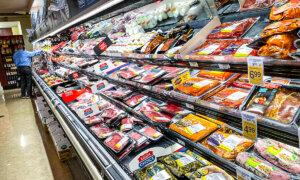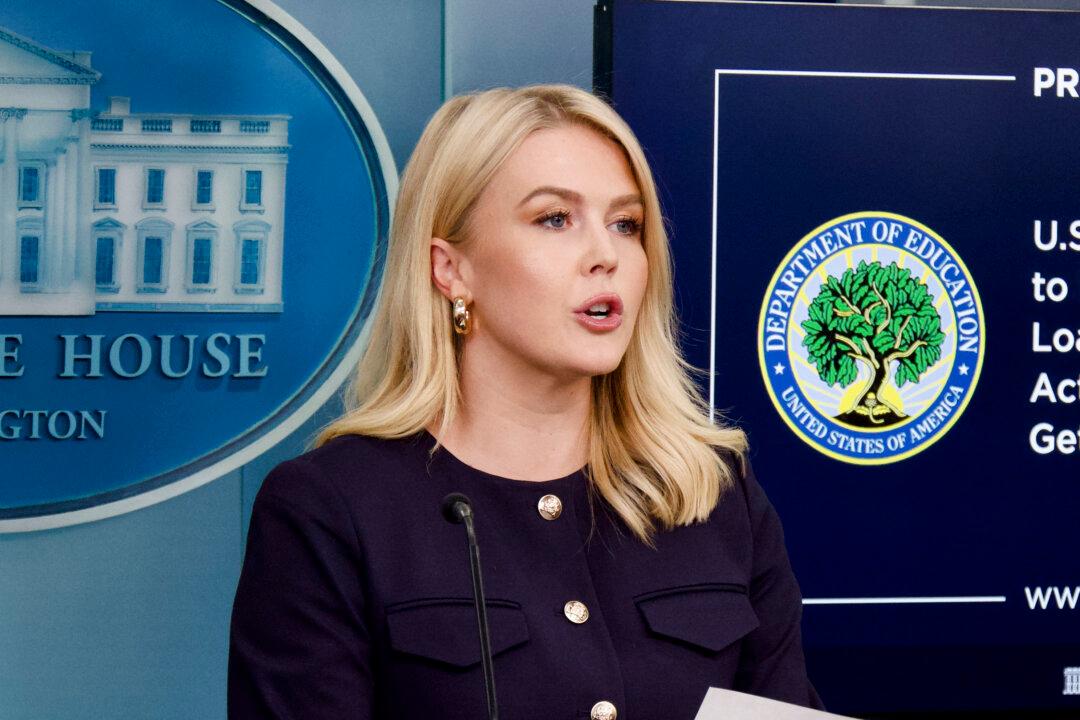The U.S. annual inflation rate came in hotter than expected for the fourth consecutive month in March, suggesting that the last mile in the inflation fight could be a slow and bumpy road for the Federal Reserve.
According to the Bureau of Labor Statistics (BLS), the consumer price index (CPI) rose to 3.5 percent last month, up from 3.2 percent in February. This was also higher than the consensus estimate of 3.4 percent.
Inflation climbed by 0.4 percent monthly and topped market expectations of 0.3 percent.
The core CPI, which removes the volatile energy and food components, was unchanged at 3.8 percent but came in slightly higher than the projection of 3.7 percent. Core inflation also jumped 0.4 percent.
The three-month annualized change in the core CPI advanced to 4.5 percent. The six-month annualized adjustment in the core CPI swelled to 3.9 percent, the highest reading since July 2023.
Gasoline and shelter prices were the most significant contributors to the inflation increase.
The energy index rose by 1.1 percent monthly, including a 1.7 percent advance in gasoline. Energy services also swelled by 0.7 percent, with electricity costs surging by 0.9 percent.
Energy prices have contributed to the upward inflation pressures. Year to date, crude oil and gasoline prices have rocketed by about 20 percent and 16 percent, respectively. The rally in global energy markets has been mainly fueled by geopolitical tensions and tighter international supplies, which has resulted in a knock-on effect for various aspects of the worldwide marketplace.
Shelter continued to trend higher, rising by 0.4 percent monthly and by 5.7 percent year over year.
For the past 18 months, economists and the monetary authorities predicted shelter inflation would ease by now. It has instead remained sticky and stubborn.
Food inflation was little changed last month, edging up by 0.1 percent monthly. Compared with the same time a year ago, the food index is up by 2.2 percent.
While food inflation has stagnated, the cumulative effects have been seen throughout the industry as a wide array of goods have risen in price.
Beef has soared by 30 percent since January 2021, bread has climbed by 30 percent, and eggs have surged by 104 percent.
Elsewhere in the CPI, new vehicles dipped by 0.1 percent, while used cars and trucks fell by 1.1 percent. Apparel prices advanced by 0.7 percent, and medical care commodities jumped by 0.2 percent.
Services climbed to 5.3 percent. Transportation services soared by 1.5 percent from February to March. In the 12 months ending in March, transportation services rocketed by 10.7 percent.
Medical care services rose by 0.6 percent monthly.
Additionally, the Fed’s preferred supercore inflation ex-housing metric accelerated to 4.8 percent and rose by 0.4 percent monthly.
Market Reaction
The financial markets were disappointed by the latest inflation data as investors are fearful that this could lead to higher-for-longer interest rates.Heading into the opening bell, the leading benchmark indexes tumbled by as much as 1.1 percent.
U.S. Treasury yields spiked in the aftermath of the March CPI report, with the benchmark 10-year topping 4.5 percent for the first time since November 2023. The two-year yield hit 4.94 percent, while the 30-year bond inched toward 4.59 percent.
The U.S. dollar index, a gauge of the greenback against a basket of currencies, soared to 104.7.
It might be time to wave goodbye to a June rate, according to Greg McBride, chief financial analyst at Bankrate.
“You can kiss a June interest rate cut goodbye. Inflation came in higher than expected, the lack of progress toward 2 [percent] is now a trend,” Mr. McBride said. “There is no improvement here; we’re moving in the wrong direction.”
A solid labor market and inflation stickiness could continue to push rate cuts further out, according to Hugh Nickola, the head of fixed income at GenTrust.
“Over the past week, expectations of a Fed cut in June had recently declined to 50 [percent] from 70 [percent] thanks to stronger than anticipated economic numbers, particularly last Friday’s employment number,” he said. “Today’s stronger than expected CPI [number], due primarily to stronger than anticipated services pricing, is pushing rates up and further reducing the chances of a cut in June. This has been an ongoing theme as a resilient labor market and stickiness in inflation has consistently been pushing rate cuts further out.”
Giuseppe Sette, the president of investment research services firm Toggle AI, said he thinks rate cuts could now be off the table in 2024.
Inflation Cynicism
U.S. households are skeptical that the central bank will achieve its 2 percent target.One report even argued that headline inflation might be understated.
Ultimately, various inflation metrics have suggested that price pressures have not vanished from the U.S. marketplace, which has been reflected in ballooning Treasury yields.
The benchmark 10-year yield recently increased to a five-month high of 4.46 percent as more investors dial back their Fed policy expectations.
Heading into 2024, traders had priced in six rate cuts, although the monetary authorities listed three reductions in the December Summary of Economic Projections (SEP). The March SEP data kept these forecasts intact. However, with sticky inflation and a robust economic landscape, investors are not as confident that Fed Chair Jerome Powell and his colleagues will be quick to slash interest rates.
This has also been evident in the slate of commentary presented by monetary policymakers.
“The road is going to be bumpy, and I think if you’ve looked over the last several months, inflation hasn’t moved very much relative to where we were at the end of 2023,” he said. “There are some secondary measures in the inflation numbers that have gotten me a bit concerned that things may move even slower.”
“If we continue to see inflation moving sideways, it would make me question whether we needed to do those rate cuts at all,” Mr. Kashkari said.
The next two-day FOMC policy meeting will occur on April 30 and May 1.







